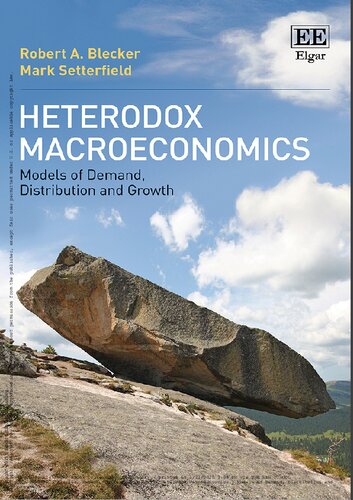

Most ebook files are in PDF format, so you can easily read them using various software such as Foxit Reader or directly on the Google Chrome browser.
Some ebook files are released by publishers in other formats such as .awz, .mobi, .epub, .fb2, etc. You may need to install specific software to read these formats on mobile/PC, such as Calibre.
Please read the tutorial at this link. https://ebooknice.com/page/post?id=faq
We offer FREE conversion to the popular formats you request; however, this may take some time. Therefore, right after payment, please email us, and we will try to provide the service as quickly as possible.
For some exceptional file formats or broken links (if any), please refrain from opening any disputes. Instead, email us first, and we will try to assist within a maximum of 6 hours.
EbookNice Team

Status:
Available4.8
12 reviews
ISBN-10 : 1784718890
ISBN-13 : 9781784718893
Author: Robert A. Blecker, Mark Setterfield
The last few decades have witnessed an outpouring of literature on macroeconomic models in the broad ‘heterodox’ tradition of Marx, Keynes, Robinson, Kaldor and Kalecki. These models yield an alternative analytical framework in which the big questions of our day – such as how inequality is related to growth or stagnation, and whether long-run growth is stable or unstable – can be fruitfully addressed. Heterodox Macroeconomics provides an accessible, pedagogically oriented treatment of the leading models and approaches in heterodox macroeconomics with clear, step-by-step presentations of core models and their solutions, properties and implications. The book begins with an overview and comparison of heterodox and mainstream approaches to long-run growth. Next it covers the core classical-Marxian, neo-Keynesian and neo-Kaleckian models of growth and distribution in the heterodox tradition. Numerous contemporary extensions, developments and alternatives are then explored, including models of financial instability, ‘supermultiplier’ models, and debates about whether capacity utilization converges to a ‘normal’ rate. The book also gives extensive coverage to models of growth in open economies, emphasizing the role of Kaldorian cumulative causation in fostering divergence among national economies, and the limitations imposed by balance-of-payments constraints on countries that rely on export-led growth. Heterodox Macroeconomics will prove to be an invaluable text for graduate and advanced undergraduate students of macroeconomics as well as those in courses on post-Keynesian theory, structuralist macroeconomics, or other heterodox approaches to economics.
Part I Core Models of Growth and Distribution
Classical-Marxian models
Neo-Keynesian models
Neo-Kaleckian models
Part II Extended Models of Distributional Conflict and Cyclical Dynamics
Distributional conflict, aggregate demand and neo-Goodwin cycles
Neo-Harrodian models and the Harrodian instability debate
New directions: wage inequality, rentier income, financial dynamics and supermultiplier models
Part III Kaldorian Approaches: Export-Led Growth and the Balance-of-Payments Constraint
Export-led growth and cumulative causation
Balance-of-payments-constrained growth I: Thirlwall’s law and extensions
Balance-of-payments-constrained growth II: critiques, alternatives and syntheses
what are the theory of demand
heterodox macroeconomics
heterodox economics examples
heterodox microeconomics
heterodox economics
Tags: Heterodox Macroeconomics, Models, Demand, Distribution, Growth, Robert Blecker, Mark Setterfield